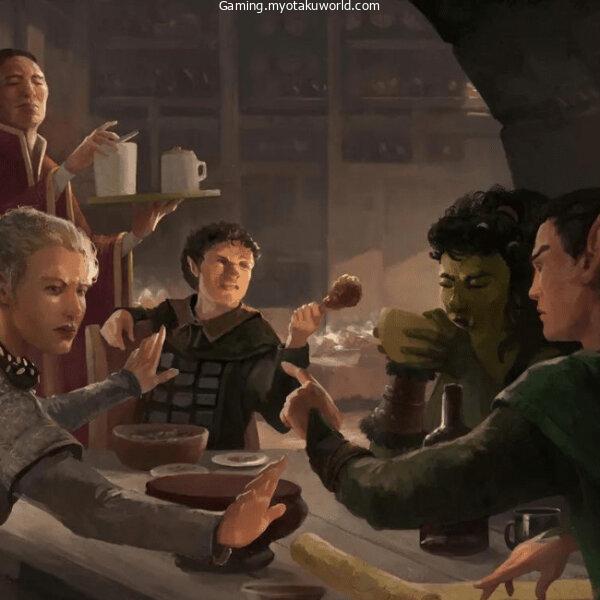We’ll look at this cantrip blade-ward that is found listed on the Bard, Sorcerer, Warlock as well as the Wizard list of spells.
Although it’s not an excellent cantrip based on the reliability damages the lightning bolt or the utility that comes from prestidigitation can be considered to be an entirely bad choice.
The guidelines for blade-ward that are as found on page 218 in the Player’s Handbook, areas they are:
Blade Ward 5e

Abjuration cantrip
Time to Cast: 1 action
Range: Self
Components: V, S
Duration: 1 round
Your hand is extended and you draw a sigil of protection from the sky.
Up to the conclusion of the next round, you will be able to withstand the piercing, bludgeoning, and slashing injuries caused by weapons.
In terms of the rules, the cantrip is simple: you forfeit your ability to be resistant to three physical damage kinds.
There are nuances in this that are both positive and negative and require further investigation.
Why Blade Ward is not good?
The primary and less significant restriction of the spell stems due to the exactness of its formulation – be aware that the ability to resist is a weapon-based attack that deals with the damage type.
So, the moment you receive bludgeoning damaging piercing, or slashing by any means other than weapons it will do nothing against it.
Most likely the most popular illustration of this is fall damage which is 1d6 bludgeoning damage per every 10 feet that you fall to a maximum is 20d6 damages.
Spellcasters who want to guard against this should use to use the feather fall spell that will ignore all falling damage.
Hot Tip
If you’ve got the number of hit points you have, you stand the chance of being able to survive the fall from any level (even from space!) because the mean result of 20d6 is around 70 points of injury!
Other physical sources of harm are less common and typically originate from natural causes like falling boulders or spells such as catapults.
The other restriction to the spell’s ability is the fact that the spell requires complete steps to be cast.
This means you can’t make use of an action Dash or Disengage or cast a spell, create an attack, etc.
If we take a look at the field of “the action economy” and “action economy,” we will discern why this isn’t a good idea.
A typical D&D group of four players (let’s consider the classic combo consisting of Fighter, Rogue, Wizard, and Cleric) will face equal numbers of enemies including bandits.

In a complete battle, each creature has a turn, comprising actions, movements as well as bonus actions and responses.
Since there are the same figures, the action economy is described as well-balanced.
But, the Wizard, as in this instance makes use of their actions to cast blades but not do anything to aid their side in winning this battle.
Yes, the Wizard is less likely to be injured when any bandits attack them, however, they’ll still be taking only half the damage.
If the bandits attack the other members of the group and the rest of the party (excluding the wizard because they’re casting blades) can attack the bandits, it’s 3 attacks from the actions of the party against 4 of the bandits’ actions.
Assuming the party isn’t significantly stronger or more well-armed than the bandits the simple math predicts that they will likely lose the engagement.
In this way, it will be clear that taking action to defend yourself is usually not the best strategy to follow.
There are however some circumstances that warrant caution, which I’ll detail further down.
Why is Blade Ward Good?
At first glance, blade wards are only useful in certain situations – for instance, if you were trapped in a dangerous position by an enemy or creature.
It may be beneficial to cast this magic spell to ensure your safety for the duration of this round in the hopes to escape or rely on the other party members to support you.
As I mentioned in my previous discussion of action economy the spell isn’t ideal however it could help you fight some gruesome situation and isn’t that bad in the case of just one turn of fighting.
However, putting one of your few choices of cantrips to something that is designed to prevent any error that could occur isn’t exactly what you could justify as being good.
However, the value blade ward’s value Blade Ward is evident when used alongside certain subclasses to mitigate this reduction in the efficiency of actions.
The first one is the Eldritch Knight Fighter subclass. Eldritch Knights can study and cast a few spells from the Wizard spell list and only from the abjuration or evocation classes of magic.
Fortunately, the blade-ward spell is an abjuration spell, so it’s a good choice.
The synergy is evident when we examine the Eldritch Knight’s 7th-level feature, War Magic.
This lets an Eldritch Knight launch an attack that has a bonus if they were able to use their ability to cast a cantrip.
In the event of particularly difficult combat, it may be best for one Eldritch Knight to concentrate on fortifying their defenses instead of doing the most damage.
In this case, cutting a blade becomes quite an effective option since it lets an Eldritch Knight deal fewer damage and still strike at least once per round.
The other comes out of that of the Bladesinger Wizard subclass. At the 6th level, it is possible to use a Bladesinger can attack twice thanks to the Extra Attack ability, and can replace for one attack to cast a.
Similar to that of the Eldritch Knight above, allowing the Bladesinger to defend and attack simultaneously, however, it is slightly better since it is based on one action per turn, not an action and bonus.
Final Words
When utilized frequently, blade ward is an extremely poor choice for a cantrip.
If used in the right context and synergistically, and in a manner that doesn’t impact the economics of the action, blade ward has its uses, and it shouldn’t be dismissed as a bad choice.









